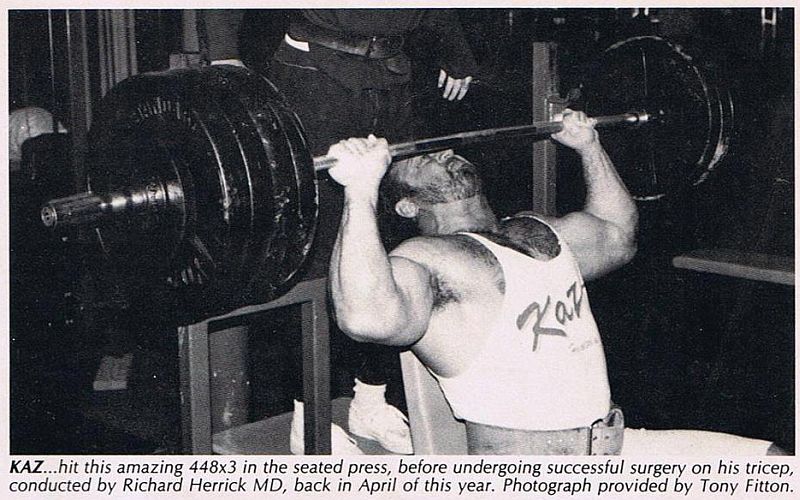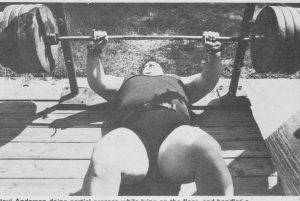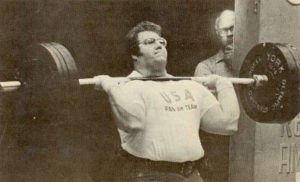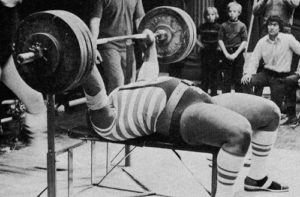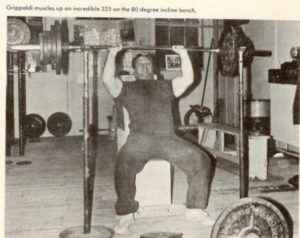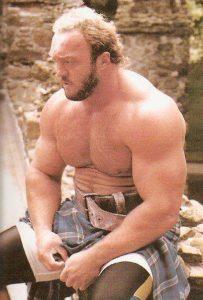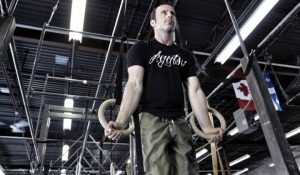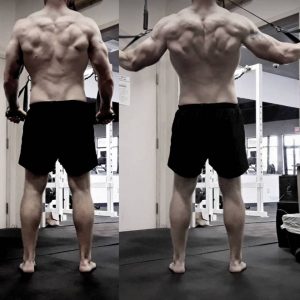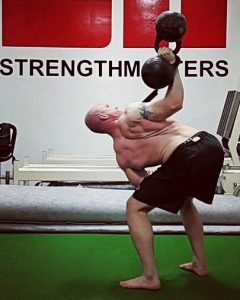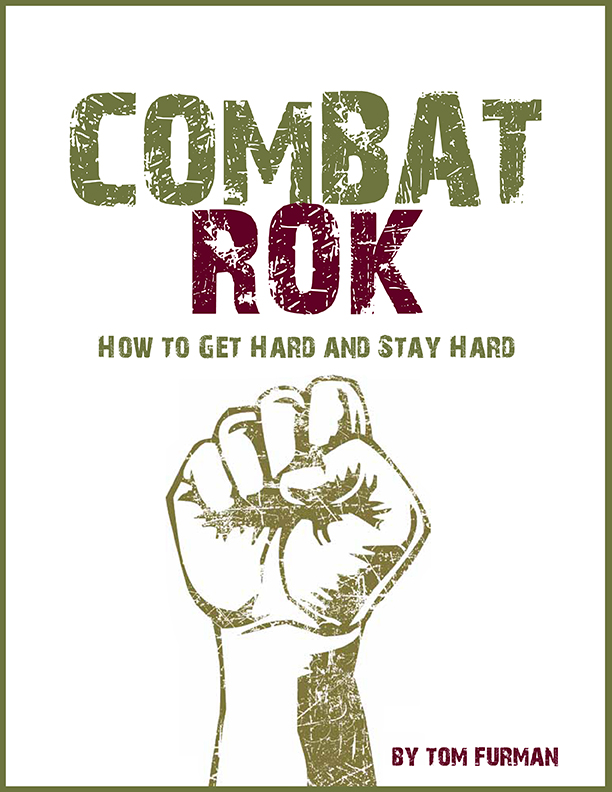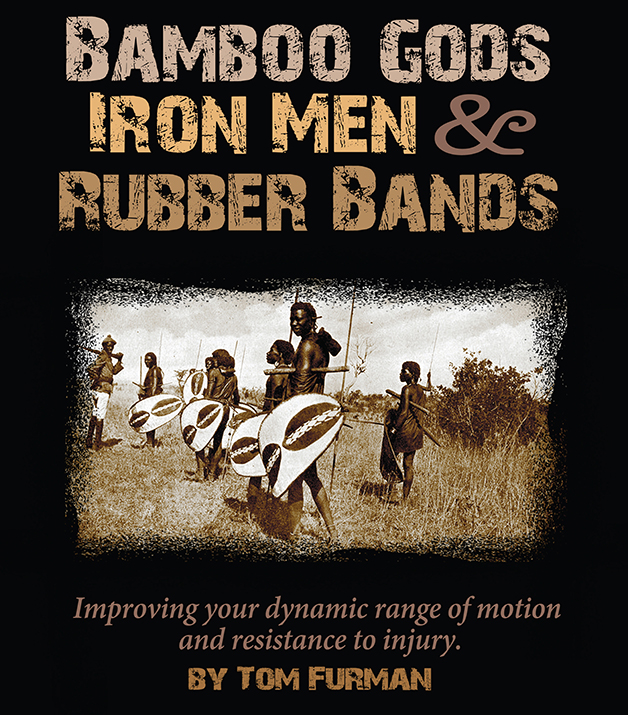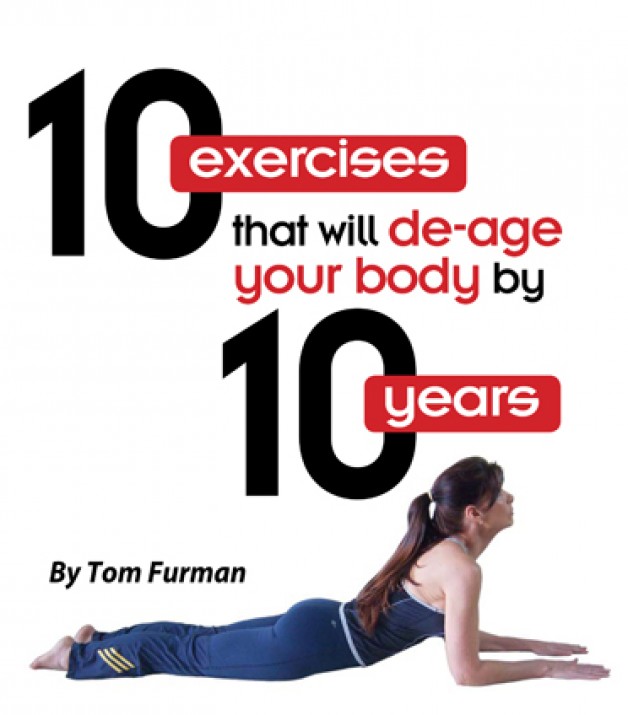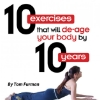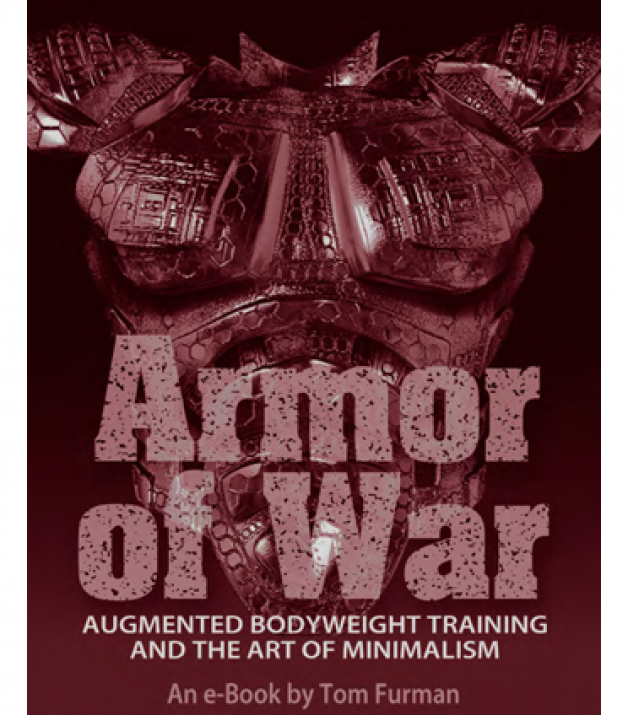There is a claim from those who use an N = 1 platform that we should not overhead press. There is an equal claim in the anecdotal ocean that we should not bench press. Both camps have ample stories, x-rays and MRI’s to fuel the emotionally charged debate. This matter will never be settled.
The shoulder joint, similar too, but not exactly like, the hip joint is subject to genetic variation. Therefore one person’s manna is another person’s poison. However, success leaves clues. We can look at the historical record and see if overhead pressers were capable of decent benching and if benchers were capable of substantial overhead lifting. The evidence would show that there is a common factor, like the training was proper, or, they were just damned strong.
First off, the original, World’s Strongest Man, Paul Anderson did little bench pressing early in his career. He focused on the heaviest movements possible for squatting, deadlifting and overhead pressing. Only later on did he focus more on the bench. Below is a photo of him doing floor presses on his front porch.
His overhead press off of the rack was 565, while his best bench press was 628. Again, he claimed he spent little time on the bench. However here is his program for overhead pressing. It’s not posted to expose some, ‘secret’, methodology, but to show that he did the movement, variations of the movement and a few assistance exercises to the movement.
Press off rack
300 – 6 reps
400 – 2 reps
390 – 2 reps
370 – 2 reps
Press outs, 500 pounds, several sets of 4 reps from about the sticking point in the press to overhead.
Press from shoulders to top of head – 500, 4 reps.
Push press off rack – 450, 3 reps.
Bench press – 400 to 450, sets of 6-8 reps.
Handstand presses against wall.
Ken Patera was the Bronze Medalist Olympic Lifter at the 1972 Olympic Games. He was a well rounded athlete, able to dunk a basketball back when he was only 5-10 in high school. During training for the Olympics at York Barbell Club, Ken did a pressing exhibition where he pressed 552 off the racks. Oddly he claimed to NEVER do the bench press, but when pushed to a max, he bench pressed, 560.
BIG Jim Williams is an incredible character in the strength training world. He lifted large and he lived large, if you want to be conservative with your language. His training sessions were legendary for frequency and volume. Suffice it to say, his 705 bench press in front of judges, [but not official], was years before it’s time. His official bench was 675. The amazing part was his almost casual attempts at pressing. His training partner, John Kuc witnessed with regularity, Big Jim grabbing a 400 lb barbell, at the end of his training session and clean & pressing it with ease.
An American, Olympic Lifting, legend, Phil Grippaldi, regularly used the bench press to train his Olympic Press. He added the use of Broomstick Dislocates before, during and after those sessions. I have NO record of his max bench, but he also liked seated incline at a VERY steep angle. Phil would max out at 325 for an 80 degree seated press. This translated to an Olympic Press of 396, which was double bodyweight.
Lastly in our examination of the historical record, we have Bill Kazmaier. After he had bench pressed 660 and tore his pectoral during the World’s Strongest Man Contest, he spent some time focusing on the seated overhead press. The feature image shows him doing 448×3 just before triceps surgery. Once again, if you can press, you can press. Below is an image of the hypertrophy in his upperbody as a byproduct of the work.
That was the historical record. Realize in training there are three types of transfer. Positive, Negative and Indifferent. That means things can help, they can hurt or they can do nothing. Sometimes “nothing” is very powerful in the terms of placebo or even in recovery. Following are some drills to possibly bridge the gap from Benching to Overhead or Overhead to Benching.
- The Double Kettlebell Press. This is not the single. If you find that doubles are problematic, seek coaching or avoid them. Don’t get preachy with others. The offset nature of the kettlebells and the stability required to press them makes the movement better for some than others. Normally, strength type moves with the kettlebell are done in sets of 5 with weights you are capable of lifting for 10 reps. Multiple sets are indicated.
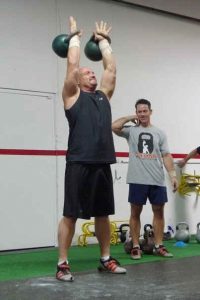
Ken Blackburn demonstrating the double kettlebell press. His seated press record is over 50 reps with 32K kettlebells in ten minutes.
2. Ring Dips. Pat Casey, the first man to bench press over 600 lbs, said that dips were the, “Cadillac of Upper Body Movements”. If that is the case, then Ring Dips are the Ferrari. Here is a quote from the late, Charles Poliquin –
When doing [ring] dips, the sheer instability works wonders on learning how to use the pecs and triceps while firing the shoulder girdle to stabilize the movement.
No other piece ranks up there to work all muscle groups in the torso and upper extremities. Look at the hypertrophy development of the medalists in the rings at the Olympics.
During ring dips the need to externally rotate the arms and supinate the palms is a necessary component that will transfer to shoulder and elbow strength. Best to seek instruction from a very experienced gymnastics coaching program.
3. Weighted Pushups make a great bodyweight drill into a progressively weighted one. Not only do they target the upper body musculature, but enhance the stiffening or planking process that can have a positive impact on overall fitness. Here is an article I wrote about Eddie Kowacz, the Green Ghost, on doing push ups. His programs are well thought out and suited to his needs. Be sure to start slowly to make sure they are adaptable to YOUR needs. https://www.tomfurman.com/green-ghost-chronicles-in-the-marines-20-years-ago-i-could-out-push-up-god/
4. The Bent Press is both difficult and ridiculed. It’s an old movement done by strongmen of the past. Those who don’t practice or even try it, relate to it’s theatrics of appearing in animal skin and sandals to perform. However it requires a developed range of motion, stability in compromised positions and a high level of skill. It’s a more dynamic form of the popular,, Windmill exercise that is common in kettlebell circles. The effect on the shoulder, but more importantly, the upper back are indeed profound. If you can’t do this due to connective tissue injury or wear and tear, it is understandable. However if a tight upper body and hips is preventing you, perhaps it is time to start. The carryover will be systemic more than localized. The hypertrophic adaptations seem unique. Below is a photo of the back of fitness pro, Levi Markwardt. His Instagram is @leviarsl
Here is a photo of Levi performing a Bent Press. Seek the best coaching available for this total body movement.
The above accessory movements can be added to a bench press or overhead press program. They can also be trained alone. However they can add the range of motion, strength and stability needed to practice both bench pressing AND overhead pressing. Only black & white thinking limits itself to either/or.
If you have any questions or comments please forward them to physicalstrategies@gmail.com. As well I am available for private, online coaching.

